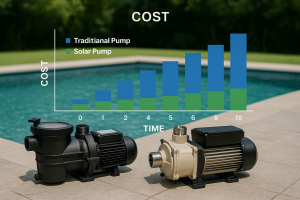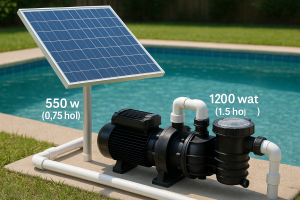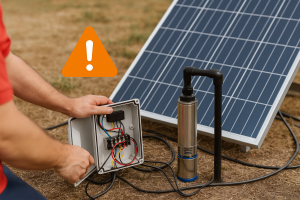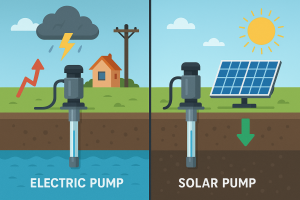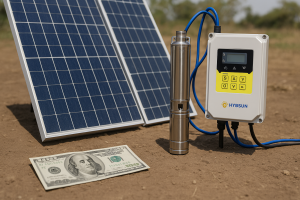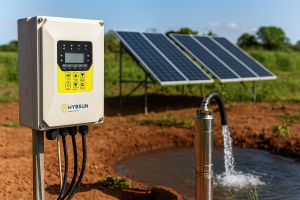Struggling with high pump electricity costs or no grid access? This limits your water supply and hurts your budget. Solar pump inverters offer a reliable, cost-effective solution.
A solar pump inverter converts DC power from solar panels into AC power for your water pump. Crucially, it uses MPPT technology to maximize energy drawn from the sun, ensuring efficient water pumping even when sunlight changes.
Now that you know the basics, you might have more specific questions. Let's dive into some common ones I hear from distributors and buyers like you. Understanding these details helps you choose the right equipment for your customers or projects, ensuring long-term success.
What is the difference between a solar pump inverter and a VFD?
Confused by technical terms like VFD and solar pump inverter? Choosing the wrong one can lead to poor performance or unnecessary costs. Let's clarify the main difference simply.
The key difference is optimization for solar power. A solar pump inverter includes Maximum Power Point Tracking (MPPT) specifically designed for solar panels. A standard Variable Frequency Drive (VFD) mainly controls motor speed but usually lacks this solar optimization.
!
A Variable Frequency Drive, or VFD, is essentially a motor controller. It takes standard AC power (like from the grid) and changes its frequency and voltage. This lets you precisely control the speed of an AC motor, which is useful in many industrial applications for saving energy or managing processes. Think of fans, conveyors, or standard pumps running on grid power.
Now, a solar pump inverter often includes VFD functionality to control pump speed, but it's specialized for solar applications. Its primary input is DC power directly from solar panels [^4]. It converts this DC power to AC power suitable for the pump motor. The critical addition is Maximum Power Point Tracking (MPPT). Solar panels have an optimal operating point (voltage and current) where they produce the most power, and this point changes with sunlight intensity and temperature. MPPT algorithms constantly track this "sweet spot" to extract the maximum possible energy from the panels throughout the day [^1]. This makes a huge difference in the amount of water pumped using only solar power. Our HYBSUN inverters use advanced MPPT technology precisely for this reason – to maximize water delivery for our customers .
So, while both can control pump speed, only the solar pump inverter is truly optimized to get the most out of your solar panels.
Can I run a water pump on a standard solar inverter?
Have a standard solar inverter already? Thinking of using it for a pump? This might seem economical but could cause performance issues or even damage. Let's see if it's feasible.
Technically, maybe, but it's strongly not recommended. Standard solar inverters (for homes/grid-tie) aren't designed for the high starting current of pump motors and lack pump-specific protections and the specialized MPPT needed for direct solar-to-pump operation. Use a dedicated solar pump inverter.
 "Standard vs Solar Pump Inverter")
"Standard vs Solar Pump Inverter")
A standard solar inverter, the type commonly installed for residential rooftop solar systems, is designed primarily to feed AC power into the grid or charge a battery bank. It expects relatively stable loads from typical household appliances and aims for grid synchronization or efficient battery charging profiles.
Water pumps, particularly submersible types used in wells, behave very differently. They are inductive loads, meaning they require a significant surge of current to start the motor spinning (known as inrush current or starting current). A standard inverter might see this surge as a fault condition and shut down, or it might not be robust enough to handle it repeatedly, potentially leading to premature failure.
Furthermore, the power output from solar panels fluctuates constantly. A dedicated solar pump inverter, like the ones we design and manufacture at HYBSUN [^1], is engineered specifically to handle these challenges:
- Handles Start-up Surge: Built with components and control logic robust enough to manage the high starting current of pumps without tripping or sustaining damage.
- Optimized MPPT for Pumps: The MPPT algorithm isn't just maximizing panel output; it's tuned to match the power curve of a pump load, ensuring efficient operation across varying sunlight conditions.
- Pump-Specific Protections: Features essential for pump longevity, such as dry-run protection (detects if the water source runs dry and stops the pump to prevent damage), are standard in solar pump inverters but absent in regular PV inverters [^features].
Using a standard inverter for a pump often results in poor performance, inefficiency, and a high risk of damaging either the inverter or the pump. For reliable and efficient solar water pumping, always choose an inverter designed specifically for the task.What does an inverter do in a pump system?
Unsure what the inverter actually does for your pump? It might seem like just another box in the system, but it's absolutely vital. Understanding its roles helps you appreciate its value and function.
The inverter is the smart controller of your solar pump system. It takes raw DC power from solar panels, converts it to the right AC power for the pump motor, and constantly optimizes the power draw using MPPT to maximize water output.
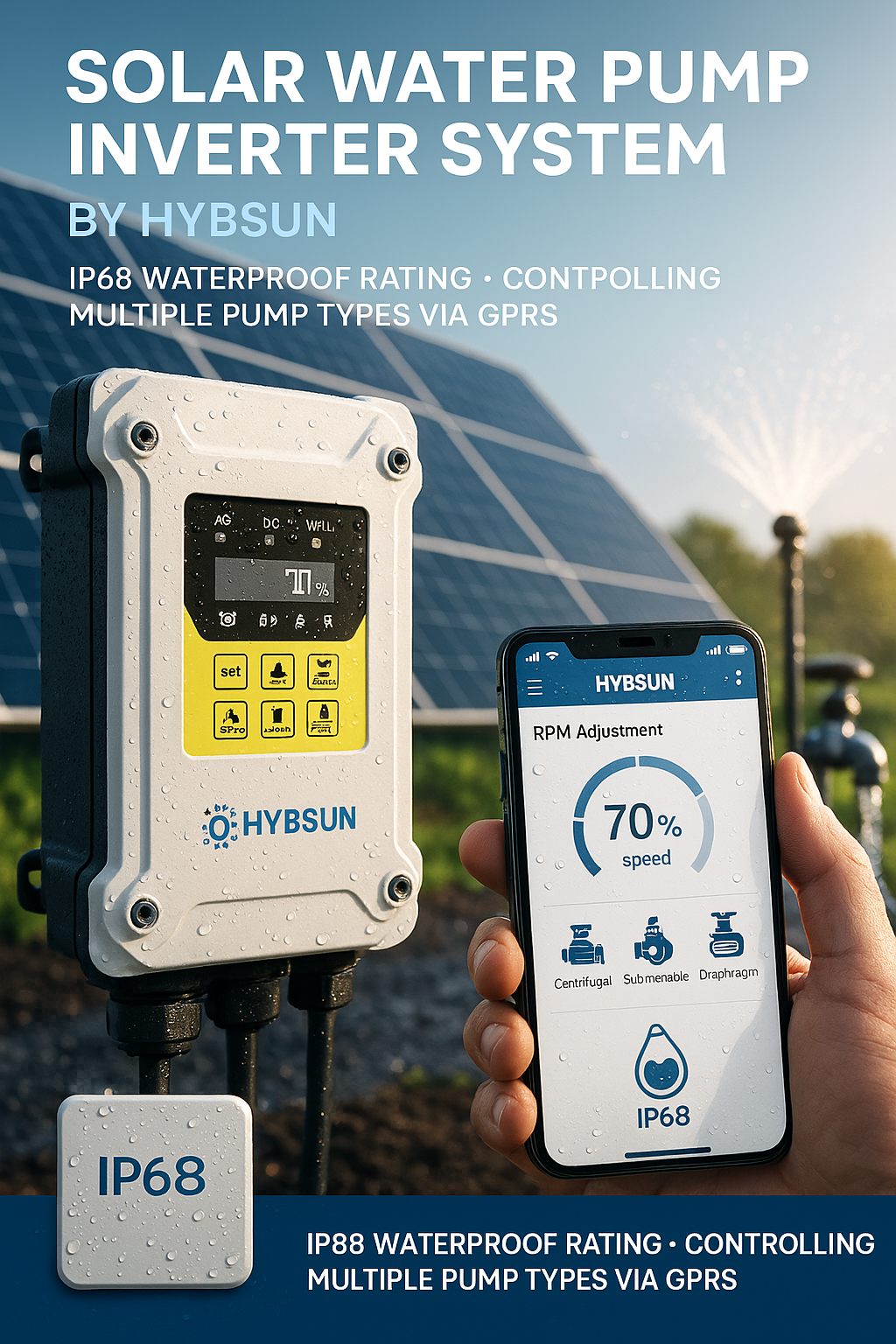 )
)
Think of the solar pump inverter as the central brain managing the entire solar water pumping operation. It performs several critical jobs seamlessly:- Power Conversion: This is its most fundamental task. Solar panels generate Direct Current (DC) electricity. Most robust water pumps, especially submersible well pumps, run on Alternating Current (AC) power. The inverter efficiently converts the variable DC voltage and current from the panels into the stable AC voltage and frequency the pump motor needs to operate [^4].
- Maximum Power Point Tracking (MPPT): This is arguably the inverter's most crucial "smart" function for solar applications. Sunlight conditions change throughout the day due to clouds, sun angle, and temperature. The MPPT feature continuously analyzes the output of the solar panels and adjusts the electrical load (how much power the pump tries to draw) to ensure the panels are always operating at their peak efficiency point [^features]. This maximizes the energy harvested and thus the amount of water pumped.
- Motor Control & Soft Start: The inverter doesn't just switch the pump on; it controls how it runs. It typically provides a "soft start," gradually increasing the voltage and frequency to gently bring the pump up to speed. This reduces mechanical stress on the pump components (like bearings and couplings) and electrical stress on the motor windings, significantly extending the pump's lifespan. It also adjusts the pump's speed based on the available solar power – running faster in bright sun and slower in lower light, instead of just shutting off.
- System Protection: A good solar pump inverter acts as a guardian for your pump and motor. It constantly monitors operating conditions and protects against common problems like dry running (which can quickly destroy a pump), motor overload, short circuits, overheating, and under/over voltage from the solar array [^features].
- Hybrid Capability (Optional): Many modern solar pump inverters, including our HYBSUN AC/DC hybrid models [^6], offer the flexibility to accept power from an AC source (like the grid or a generator) when solar power is insufficient or unavailable [^4]. This ensures water supply continuity.
In essence, the inverter makes the whole system work together intelligently and reliably.What are the benefits of an inverter water pump system?
Considering a solar pump system? Wondering if the benefits truly justify the initial investment? As someone who works with distributors like Daniel Nkosi in South Africa and procurement officers globally, I know cost-effectiveness and reliability are key. Investing wisely means understanding the clear advantages you gain.
The main benefits are significant cost savings on electricity, reliable water supply even in remote off-grid areas, longer pump life due to controlled operation and protection features, and using clean, environmentally friendly solar energy. It's a smart, long-term investment.
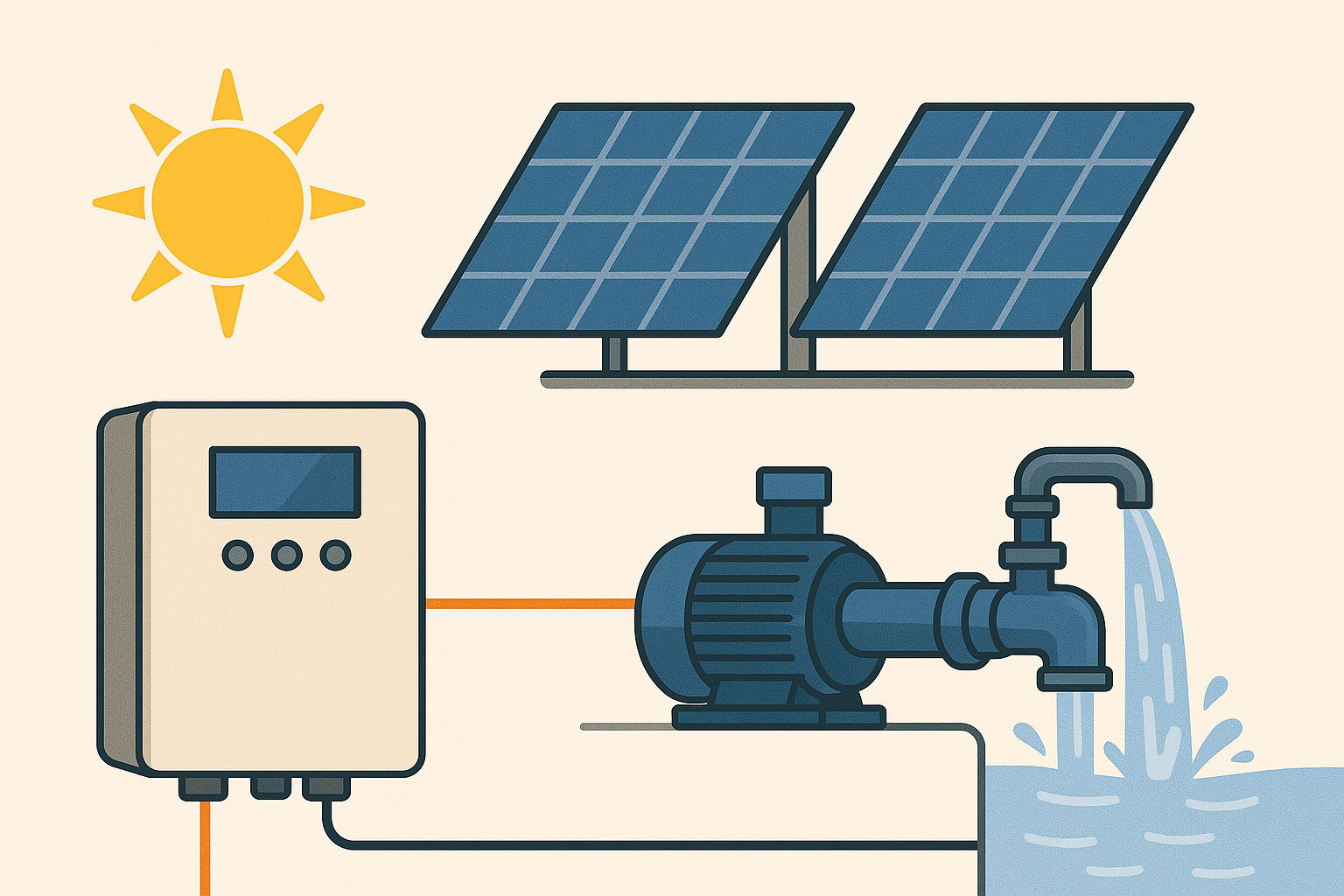 )
)
Investing in a solar water pump system powered by a dedicated inverter delivers substantial advantages, particularly crucial in agricultural and remote water supply scenarios:
- Massive Operating Cost Savings: This is often the number one driver. Solar energy is free fuel. Once the system is installed, the recurring cost of electricity or diesel fuel for pumping is drastically reduced or eliminated entirely. For businesses and farms, this leads to a predictable and often rapid return on investment.
- Reliable Water Access Off-Grid: Solar pump systems operate wherever there's sunlight, making them ideal for remote locations without reliable grid access – a common situation in many agricultural regions across Africa, Asia, and the Americas. This ensures consistent water for irrigation, livestock, or domestic use, boosting productivity and quality of life.
- Extended Pump and Motor Lifespan: The inverter's intelligent control, especially the soft-start function, significantly reduces mechanical and electrical stress during pump startup. Integrated protections against dry-running, overload, voltage fluctuations, and overheating prevent the most common causes of premature pump failure [^features]. This means less downtime, fewer repairs, and a longer operational life for the pump itself. Our HYBSUN systems are built for this durability, often lasting over 10 years [^3].
- Optimized Water Output (Efficiency): Thanks to MPPT technology, the inverter ensures the system extracts the maximum possible power from the solar panels under varying conditions. This translates directly to more water pumped per day compared to simpler direct-DC systems or poorly matched setups.
- Environmentally Sound: Utilizing solar power is clean and sustainable. It reduces dependence on fossil fuels, lowers carbon emissions, and contributes to environmental responsibility.
- Low Maintenance Requirements: Solar panels require minimal cleaning, and brushless DC motors used in many modern solar pumps (like ours) have fewer wearing parts than traditional AC motors [^features]. Combined with the protective features of the inverter, the overall system maintenance is typically very low.
- System Flexibility (Hybrid Options): With AC/DC hybrid inverters, like those available from HYBSUN 1, users gain the best of both worlds: free solar power when available, with automatic switching to grid or generator backup when needed, ensuring uninterrupted water supply.
These combined benefits make solar inverter pump systems a compelling solution for reliable, cost-effective, and sustainable water management worldwide.Conclusion
In short, a solar pump inverter is the essential brain connecting your solar panels to your water pump. It intelligently converts power, maximizes energy harvest, and protects your equipment, delivering reliable and cost-effective water pumping using clean energy.
-
HYBSUN SOLAR CO., LTD manufactures and supplies a range of solar water pumping systems, including AC/DC Hybrid models. Founded in 2005, based in Wenling, China. Contact: Tiger@hybsun.com. ↩
